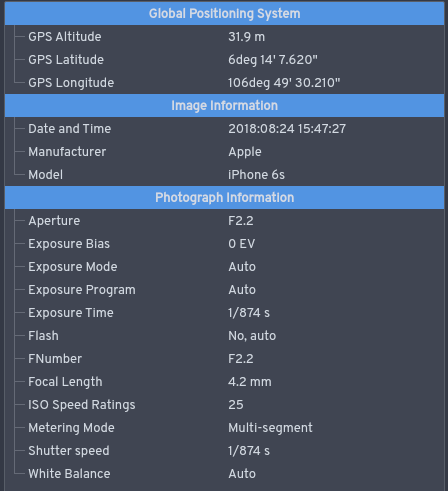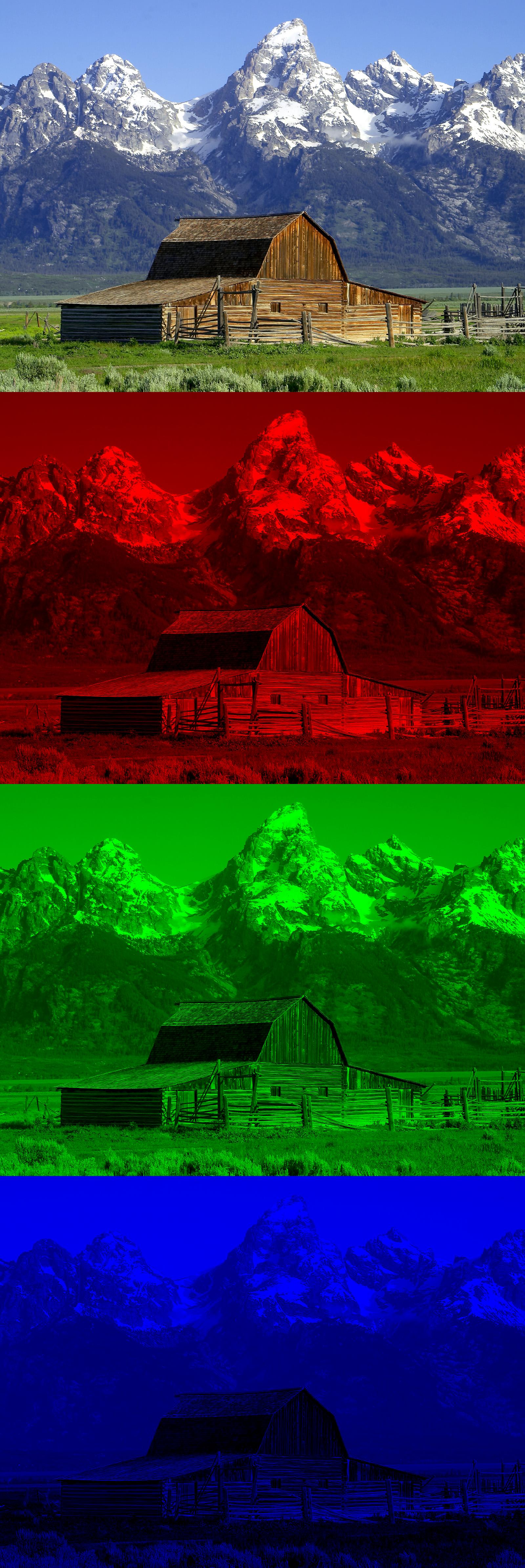|
TIFF
Tag Image File Format, abbreviated TIFF or TIF, is an image file format for storing raster graphics images, popular among graphic artists, the publishing industry, and photographers. TIFF is widely supported by scanning, faxing, word processing, optical character recognition, image manipulation, desktop publishing, and page-layout applications. The format was created by the Aldus Corporation for use in desktop publishing. It published the latest version 6.0 in 1992, subsequently updated with an Adobe Systems copyright after the latter acquired Aldus in 1994. Several Aldus or Adobe technical notes have been published with minor extensions to the format, and several specifications have been based on TIFF 6.0, including TIFF/EP (ISO 12234-2), TIFF/IT (ISO 12639), TIFF-F (RFC 2306) and TIFF-FX (RFC 3949). History TIFF was created as an attempt to get desktop scanner vendors of the mid-1980s to agree on a common scanned image file format, in place of a multitude of proprietary ... [...More Info...] [...Related Items...] OR: [Wikipedia] [Google] [Baidu] |
GeoTIFF
GeoTIFF is a public domain metadata standard which allows georeferencing information to be embedded within a TIFF file. The potential additional information includes map projection, coordinate systems, ellipsoids, datums, and everything else necessary to establish the exact spatial reference for the file. The GeoTIFF format is fully compliant with TIFF 6.0, so software incapable of reading and interpreting the specialized metadata will still be able to open a GeoTIFF format file. An alternative to the "inlined" TIFF geospatial metadata is the *.tfw World File sidecar file format which may sit in the same folder as the regular TIFF file to provide a subset of the functionality of the standard GeoTIFF described here. History The GeoTIFF format was originally created by Dr. Niles Ritter while he was working at the NASA Jet Propulsion Laboratory. The reference implementation code was released mostly as public domain software with some parts under a permissive X license. On Sep ... [...More Info...] [...Related Items...] OR: [Wikipedia] [Google] [Baidu] |
Exchangeable Image File Format
Exchangeable image file format (officially Exif, according to JEIDA/JEITA/CIPA specifications) is a standard that specifies formats for images, sound, and ancillary tags used by digital cameras (including smartphones), scanners and other systems handling image and sound files recorded by digital cameras. The specification uses the following existing encoding formats with the addition of specific metadata tags: JPEG lossy coding for compressed image files, TIFF Rev. 6.0 ( RGB or YCbCr) for uncompressed image files, and RIFF WAV for audio files (linear PCM or ITU-T G.711 μ-law PCM for uncompressed audio data, and IMA-ADPCM for compressed audio data). It does not support JPEG 2000 or GIF encoded images. This standard consists of the Exif image file specification and the Exif audio file specification. Background Exif is supported by almost all camera manufacturers. The metadata tags defined in the Exif standard cover a broad spectrum: * Camera settings: This includes stati ... [...More Info...] [...Related Items...] OR: [Wikipedia] [Google] [Baidu] |
Aldus Corporation
Aldus Corporation was an American software company best known for its pioneering desktop publishing (DTP) software. PageMaker, the company's most well-known product, ushered in the modern era of desktop computers such as the Macintosh seeing widespread use in the publishing industry. Paul Brainerd, the company's co-founder, coined the term ''desktop publishing'' to describe this paradigm. The company also originated the Tag Image File Format (TIFF) file format, widely used in the digital graphics profession. Aldus was founded by Brainerd (who also served as chairman of the company's board), Jeremy Jaech, Mark Sundstrom, Mike Templeman, and Dave Walter. It was founded in Seattle, Washington, in 1984 and was acquired by Adobe Systems a decade later. The company is named after 15th-century Venetian printer Aldus Manutius. History PageMaker was released in July 1985 and relied on Adobe's PostScript page description language. For output, it used the Apple LaserWriter, a PostS ... [...More Info...] [...Related Items...] OR: [Wikipedia] [Google] [Baidu] |
Tag Image File Format / Electronic Photography
Tag Image File Format/Electronic Photography (TIFF/EP) is a digital image file format standard – ISO 12234-2, titled "Electronic still-picture imaging – Removable memory – Part 2: TIFF/EP image data format". This is different from the Tagged Image File Format, which is a standard administered by Adobe currently called "TIFF, Revision 6.0 Final – June 3, 1992". The TIFF/EP standard is based on a subset of the Adobe TIFF standard, and a subset of the JEITA Exif standard, with some differences and extensions. One of the uses of TIFF/EP is as a raw image format. A characteristic of most digital cameras (but excluding those using the Foveon X3 sensor or similar, hence especially Sigma cameras) is that they use a color filter array (CFA). Software processing a raw image format for such a camera needs information about the configuration of the color filter array, so that the raw image can identify separate data from the individual sites of the sensor. Ideally this ... [...More Info...] [...Related Items...] OR: [Wikipedia] [Google] [Baidu] |
Adobe Inc
Adobe Inc. ( ), originally called Adobe Systems Incorporated, is an American multinational computer software company incorporated in Delaware and headquartered in San Jose, California. It has historically specialized in software for the creation and publication of a wide range of content, including graphics, photography, illustration, animation, multimedia/video, motion pictures, and print. Its flagship products include Adobe Photoshop image editing software; Adobe Illustrator vector-based illustration software; Adobe Acrobat Reader and the Portable Document Format (PDF); and a host of tools primarily for audio-visual content creation, editing and publishing. Adobe offered a bundled solution of its products named Adobe Creative Suite, which evolved into a subscription software as a service (SaaS) offering named Adobe Creative Cloud. The company also expanded into digital marketing software and in 2021 was considered one of the top global leaders in Customer Experience ... [...More Info...] [...Related Items...] OR: [Wikipedia] [Google] [Baidu] |
Desktop Publishing
Desktop publishing (DTP) is the creation of documents using page layout software on a personal ("desktop") computer. It was first used almost exclusively for print publications, but now it also assists in the creation of various forms of online content. Desktop publishing software can generate layouts and produce typographic-quality text and images comparable to traditional typography and printing. Desktop publishing is also the main reference for digital typography. This technology allows individuals, businesses, and other organizations to self-publish a wide variety of content, from menus to magazines to books, without the expense of commercial printing. Desktop publishing often requires the use of a personal computer and WYSIWYG page layout software to create documents for either large-scale publishing or small-scale local multifunction peripheral output and distribution – although a non-WYSIWYG system such as LaTeX could also be used for the creation of highly structur ... [...More Info...] [...Related Items...] OR: [Wikipedia] [Google] [Baidu] |
Adobe Systems
Adobe Inc. ( ), originally called Adobe Systems Incorporated, is an American multinational computer software company incorporated in Delaware and headquartered in San Jose, California. It has historically specialized in software for the creation and publication of a wide range of content, including graphics, photography, illustration, animation, multimedia/video, motion pictures, and print. Its flagship products include Adobe Photoshop image editing software; Adobe Illustrator vector-based illustration software; Adobe Acrobat Reader and the Portable Document Format (PDF); and a host of tools primarily for audio-visual content creation, editing and publishing. Adobe offered a bundled solution of its products named Adobe Creative Suite, which evolved into a subscription software as a service (SaaS) offering named Adobe Creative Cloud. The company also expanded into digital marketing software and in 2021 was considered one of the top global leaders in Customer Experience ... [...More Info...] [...Related Items...] OR: [Wikipedia] [Google] [Baidu] |
Tagged Image File Format / Electronic Photography
Tag Image File Format/Electronic Photography (TIFF/EP) is a digital image file format standard – ISO 12234-2, titled "Electronic still-picture imaging – Removable memory – Part 2: TIFF/EP image data format". This is different from the Tagged Image File Format, which is a standard administered by Adobe currently called "TIFF, Revision 6.0 Final – June 3, 1992". The TIFF/EP standard is based on a subset of the Adobe TIFF standard, and a subset of the JEITA Exif standard, with some differences and extensions. One of the uses of TIFF/EP is as a raw image format. A characteristic of most digital cameras (but excluding those using the Foveon X3 sensor or similar, hence especially Sigma cameras) is that they use a color filter array (CFA). Software processing a raw image format for such a camera needs information about the configuration of the color filter array, so that the raw image can identify separate data from the individual sites of the sensor. Ideally this info ... [...More Info...] [...Related Items...] OR: [Wikipedia] [Google] [Baidu] |
Image File Format
An Image file format is a file format for a digital image. There are many formats that can be used, such as JPEG, PNG, and GIF. Most formats up until 2022 were for storing 2D images, not 3D ones. The data stored in an image file format may be compressed or uncompressed. If the data is compressed, it may be done so using lossy compression or lossless compression. For graphic design applications, vector formats are often used. Some image file formats support transparency. Raster formats are for 2D images. A 3D image can be represented within a 2D format, as in a stereogram or autostereogram, but this 3D image will not be a true light field, and thereby may cause the vergence-accommodation conflict. Image files are composed of digital data in one of these formats so that the data can be displayed on a digital (computer) display or printed out using a printer. A common method for displaying digital image information has historically been rasterization. Image file sizes ... [...More Info...] [...Related Items...] OR: [Wikipedia] [Google] [Baidu] |
Grayscale
In digital photography, computer-generated imagery, and colorimetry, a grayscale image is one in which the value of each pixel is a single sample representing only an ''amount'' of light; that is, it carries only intensity information. Grayscale images, a kind of black-and-white or gray monochrome, are composed exclusively of shades of gray. The contrast ranges from black at the weakest intensity to white at the strongest. Grayscale images are distinct from one-bit bi-tonal black-and-white images, which, in the context of computer imaging, are images with only two colors: black and white (also called ''bilevel'' or '' binary images''). Grayscale images have many shades of gray in between. Grayscale images can be the result of measuring the intensity of light at each pixel according to a particular weighted combination of frequencies (or wavelengths), and in such cases they are monochromatic proper when only a single frequency (in practice, a narrow band of frequencies) is ... [...More Info...] [...Related Items...] OR: [Wikipedia] [Google] [Baidu] |
RGB Color Model
The RGB color model is an additive color model in which the red, green and blue primary colors of light are added together in various ways to reproduce a broad array of colors. The name of the model comes from the initials of the three additive primary colors, red, green, and blue. The main purpose of the RGB color model is for the sensing, representation, and display of images in electronic systems, such as televisions and computers, though it has also been used in conventional photography. Before the electronic age, the RGB color model already had a solid theory behind it, based in human perception of colors. RGB is a ''device-dependent'' color model: different devices detect or reproduce a given RGB value differently, since the color elements (such as phosphors or dyes) and their response to the individual red, green, and blue levels vary from manufacturer to manufacturer, or even in the same device over time. Thus an RGB value does not define the same ''color'' a ... [...More Info...] [...Related Items...] OR: [Wikipedia] [Google] [Baidu] |
Row- And Column-major Order
In computing, row-major order and column-major order are methods for storing multidimensional arrays in linear storage such as random access memory. The difference between the orders lies in which elements of an array are contiguous in memory. In row-major order, the consecutive elements of a row reside next to each other, whereas the same holds true for consecutive elements of a column in column-major order. While the terms allude to the rows and columns of a two-dimensional array, i.e. a matrix, the orders can be generalized to arrays of any dimension by noting that the terms row-major and column-major are equivalent to lexicographic and colexicographic orders, respectively. Data layout is critical for correctly passing arrays between programs written in different programming languages. It is also important for performance when traversing an array because modern CPUs process sequential data more efficiently than nonsequential data. This is primarily due to CPU caching which e ... [...More Info...] [...Related Items...] OR: [Wikipedia] [Google] [Baidu] |



